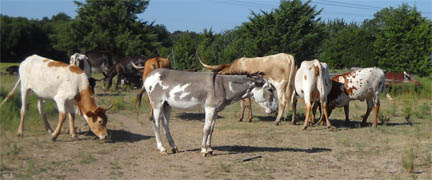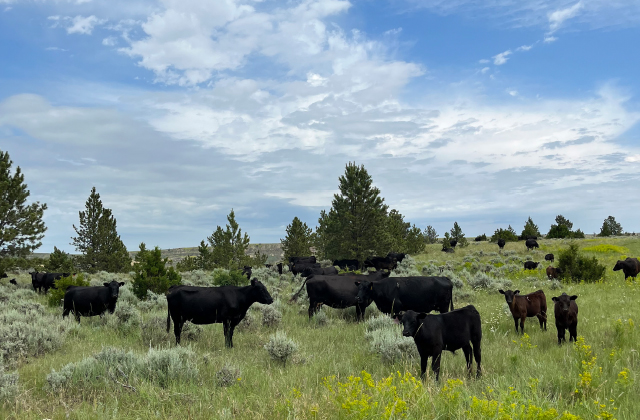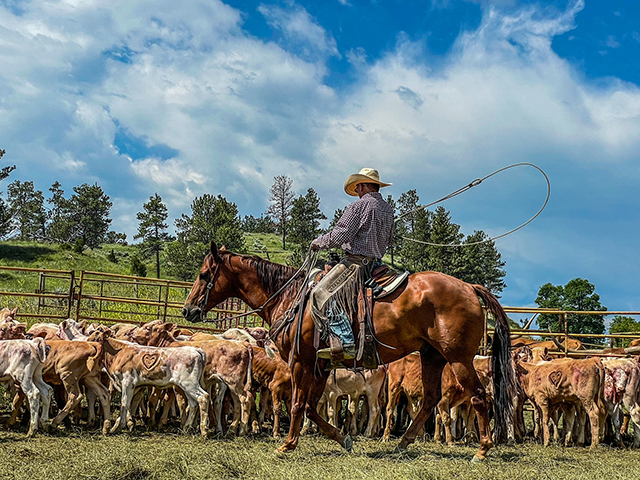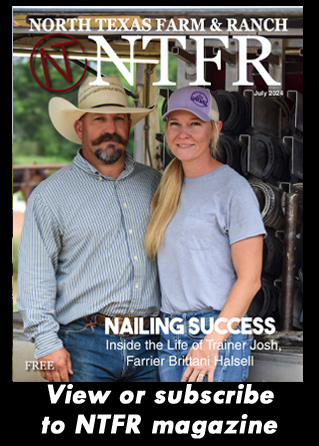Farm & Ranch
Why predators fear the long ears: Donkeys are proving their versatility as guard animals

By Martin Aldridge
“They keep them out of the pasture,” says Yvette Garza of Celina.
She’s talking about her three donkeys, and what they keep out of the pasture are the ever changing pack of dogs she fosters as founder of Lost Paws Rescue of Texas, a non-profit organization that rescues and adopts out all manner of canines and felines. New dogs, she says, learn quickly the pasture is off limits.
Garza describes her donkeys as “spoiled” and hasn’t really considered them as guarding anything, though she admits the chicken coop doesn’t attract much trouble, something she attributes to her long-eared friends. But even so, the behavior these donkeys display is one of the main reasons the use of guard donkeys is becoming increasingly popular.
“Donkeys aren’t guarding the cattle or sheep, per se,” says Leah Patton of the American Donkey & Mule Society, headquartered in Lewisville. “They are defending their family flock from predators.
“The donkey doesn’t care whether the herd baas or moos or grunts,” she says. “The donkey is concerned with the dog or coyote that is lurking. Whatever animal the donkey is bonded with, it will defend. Donkeys can do just fine with sheep, goats, cattle, llamas, horses, ponies – some people even say with chickens or other fowl.”
Patton should know – she has raised guard donkeys as well as used them with her cattle.
Yet despite the growing awareness of donkeys’ ability to guard livestock, the concept is a very old one.
“Shepherds have used donkeys to aid them in tending flocks for many centuries,” Patton says. “The donkey helped elevate the shepherd a little, extending his viewing area, allowed him to move a little faster, further and longer, and if need be, carry extra supplies. This practice has probably been going on as long as people have had donkeys as beasts of burden, and kept flocks of sheep.”
The current trend for using guard donkeys is indeed connected with a desire to protect sheep and goats. In the past, predators were largely controlled by using various poisons, but the passage of a federal ban against all toxicants in 1972 (since relaxed somewhat), as well as growing public disapproval against killing predators, left shepherds scrambling for alternatives.
Texas leads the nation not only in cattle, but in sheep and goats as well, so it’s no surprise some of the best information regarding the effectiveness of guard donkeys comes from the Texas Department of Agriculture (TDA). To read more pick up the April 2014 issue of North Texas Farm & Ranch.
Farm & Ranch
Ag Elsewhere: Wyoming

By Tressa Lawrence
Ranchers across northeast Wyoming and the surrounding areas saw record moisture levels in 2023. The year 2024 has seen significantly less moisture to date.
Farm & Ranch
Ag Elsewhere: Montana

By Lindsey Monk
People are finishing up brandings. Here, Danny Walter is shown getting it done.
Farm & Ranch
Animal Disease Traceability

By Barry Whitworth, DVM
On July 6, 2020, the United States Department of Agriculture Animal and Plant Health Inspection Service (APHIS) posted in the Federal Register a proposal that radio frequency identification tags be used as official identification for cattle and bison. Following a period for public comment, the USDA APHIS released a statement on April 24, 2024, with the amended animal disease traceability (ADT) regulation for cattle and bison. The full press release may be found at https://www.aphis.usda.gov/news/agency-announcements/aphis-bolsters-animal-disease-traceability-united-states. Under the new rule, cattle and bison will need to be identified with tags that are both visual and electronic.
The USDA defines ADT as knowing where diseased and at-risk animals are, where they have been, and when the animal disease event took place. A system that allows for efficient traceability of livestock in the United States is essential for animal health and reducing the economic effect of a foreign animal disease outbreak and other diseases on livestock producers as well as others whose well-being depends on livestock production.
To read more, pick up a copy of the July issue of NTFR magazine. To subscribe by mail, call 940-872-5922.
-

 Country Lifestyles1 year ago
Country Lifestyles1 year agoScott & Stacey Schumacher: A Growth Mindset
-

 Country Lifestyles7 years ago
Country Lifestyles7 years agoStyle Your Profile – What your style cowboy hat says about you and new trends in 2017
-

 Equine10 months ago
Equine10 months agoThe Will to Win
-

 HOME7 years ago
HOME7 years agoGrazing North Texas – Wilman Lovegrass
-

 Country Lifestyles4 years ago
Country Lifestyles4 years agoAmber Crawford, Breakaway Roper
-

 Outdoor9 years ago
Outdoor9 years agoButtercup or Primrose?
-

 Country Lifestyles8 years ago
Country Lifestyles8 years agoDecember 2016 Profile, Rusty Riddle – The Riddle Way
-

 Country Lifestyles8 years ago
Country Lifestyles8 years agoJune 2016 Profile – The man behind the mic: Bob Tallman






